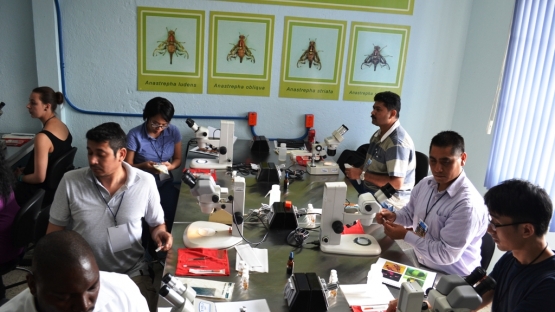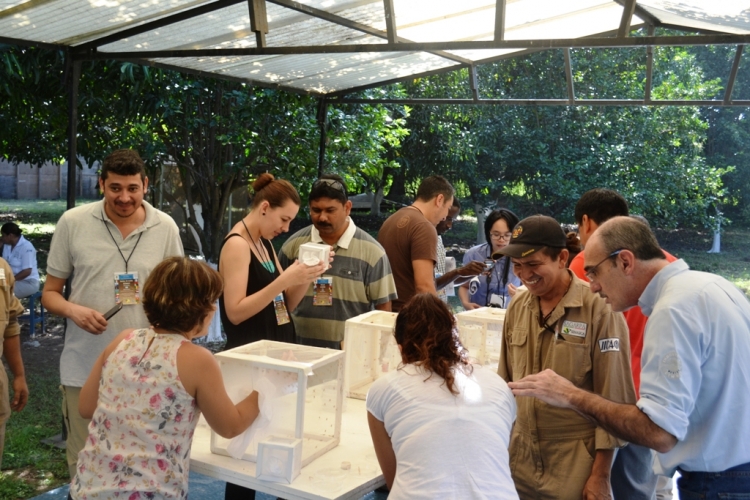From combating malaria-carrying mosquitos to protecting fruit from flies, long-term sustainability of insect pest control using nuclear techniques requires a solid technical foundation and strong management skills locally, agreed participants of a recent training course organized by the IAEA in cooperation with the Food and Agriculture Organization of the United Nations (FAO). The month-long course in Mexico and Guatemala held this autumn targeted scientists from all over the world to train them in developing and overseeing projects using nuclear and other techniques to control insect pests that affect plants, animals and humans.
“This is the first time I am being formally trained in the sterile insect technique (SIT). The course is teaching me how to manage SIT projects because I have no experience in this,” said Assane Gueye Fall, a research scientist from the Senegalese Institute of Agricultural Research, who will play a central role in expanding an IAEA-supported project in Senegal using this nuclear technique to control the population of tsetse flies, a bloodsucking livestock pest. “In this kind of project, management is the most important thing. If you don’t have good management, the project will not succeed.”
The 25 participants from 22 countries learned about the technical and managerial dimensions at each step of a project involving SIT integrated with other control methods. SIT is a form of pest control that uses ionizing radiation to sterilize male insects in rearing facilities that are then released into the wild to limit the production of offspring. (Watch this video to learn more about SIT and how it leads to the sustainable suppression of insect populations.)
“It’s about helping the participants gain a broad understanding of the technical field, while providing the foundation to manage projects,” said Rui Cardoso Pereira, an entomologist at the IAEA who oversaw the course. “Most of the top managers right now have previously attended this course, and it shows how important it is to invest today for 10 years from now in managing these projects and pests.”
In addition to project conceptualization and development, participants got a first-hand look at project implementation through expert lectures and visits to mass-rearing and release facilities in Mexico and Guatemala, where various techniques are used at an industrial scale to tackle different types of insect pests. Sessions also included socioeconomic considerations, risk management, international import and export standards and protection processes.
“This course is the first time I am seeing rearing and release facilities, and the first time I am learning in-depth about SIT,” said Atifa Qadda, Head of the Division of Plant Protection and Control in Sanitary and Food Safety National Office (ONSSA) Agadir, Morocco, who will be in charge of her country’s new fruit fly mass-rearing facility to be constructed soon with support from the IAEA. “The course has helped me to think about all requirements of a project and realize how these requirements are important. They are what motivates me to involve myself even more.”
The course has helped me to think about all requirements of a project and realize how these requirements are important.








